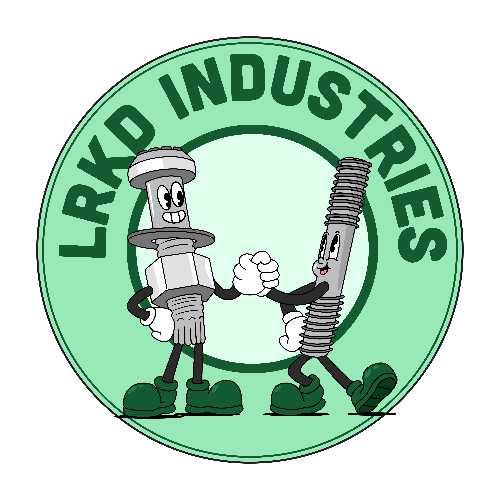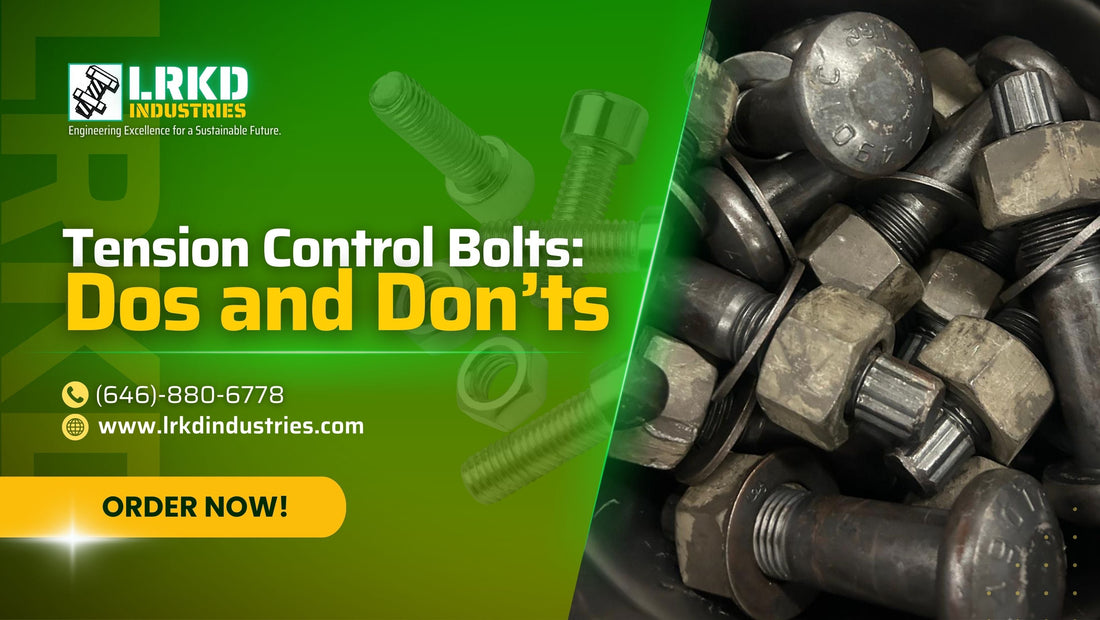In the world of construction, where safety and durability are non-negotiable, the tools we use can make or break the success of a project. Imagine an aircraft cable system holding up a suspension bridge or a towering skyscraper—the precision and reliability of these elements are vital. Among these critical components are tension control bolts (TCBs), which have revolutionized structural steelwork assembly with their efficiency and reliability. But, are you using them correctly? Let’s dive into the dos and don’ts of tension control bolts to ensure every project you undertake is built to last.
What Makes Tension Control Bolts Unique?
Tension control bolts are more than just fasteners; they’re a game-changer in modern construction. Unlike traditional bolts, TCBs have a splined end that works with a specialized shear wrench to ensure precise tensioning during installation. They eliminate guesswork and provide a visual indicator when correctly tightened.
Here’s an analogy: Think of TCBs as the torque wrenches of the bolt world. Just as a torque wrench ensures the right pressure is applied to a car’s wheel nuts, TCBs guarantee proper tension in structural connections. LRKD Industries, a trusted name in construction tools and equipment, emphasizes that these bolts streamline installation while boosting accuracy and safety.
Dos: Ensuring Optimal Use of Tension Control Bolts
When it comes to TCBs, following best practices is essential to avoid costly errors and ensure structural integrity. Here are some must-follow tips:
1. Inspect Before You Begin
Check Bolt Quality: Always inspect the bolts, washers, and nuts for visible defects like rust, cracks, or deformation. Using substandard bolts can compromise the entire structure.
Verify Certifications: Ensure your TCBs meet industry standards such as ASTM.
2. Use the Right Tools
Shear Wrench Compatibility: Always use a calibrated shear wrench compatible with your TCB’s specifications. LRKD Industries offers reliable shear wrenches designed for consistent performance.
Backup Tools: Keep backup tools on-site to prevent downtime in case of equipment failure.
3. Follow Proper Installation Procedures
Alignment Matters: Ensure the steel plates and members are properly aligned before bolt installation. Misaligned components can lead to uneven stress distribution.
Lubrication: Lightly lubricate bolt threads if recommended by the manufacturer to reduce friction and ensure accurate tensioning.
4. Conduct Post-Installation Inspections
Visual Confirmation: Check that the splined ends of all TCBs have sheared off cleanly—this indicates correct tensioning.
Torque Verification: Periodically verify installed bolts using a torque wrench to confirm consistent tension across connections.
Don’ts: Avoid These Costly Mistakes
Mistakes with Tension Control Bolts can lead to structural failures, safety hazards, and expensive rework. Here are common pitfalls to steer clear of:
1. Don’t Overlook Environmental Factors
Corrosion Risks: Avoid using standard TCBs in corrosive environments without proper coatings. Opt for galvanized or weather-resistant bolts for outdoor or marine applications.
Temperature Sensitivity: TCBs may behave differently in extreme temperatures. Always consult the manufacturer’s guidelines for temperature thresholds.
2. Don’t Mix Components
Mismatched Parts: Never mix bolts, nuts, and washers from different manufacturers. Incompatibilities can lead to improper tensioning.
Old with New: Avoid reusing old bolts in new installations, as they may not perform as expected.
3. Don’t Ignore Shear Wrench Calibration
Neglecting Calibration: Using an uncalibrated wrench can lead to inconsistent tensioning. Regularly calibrate your tools to maintain accuracy.
4. Don’t Skip Training
Untrained Workers: Ensure all personnel handling TCBs are trained in their proper use. A lack of knowledge can lead to errors that compromise safety.
Example: The Consequences of Neglect
Consider this: In 2017, during a bridge construction project in Texas, a construction firm faced significant delays and financial losses because improperly tensioned TCBs caused the steel joints to fail during load testing. This incident highlights the critical importance of using tension control bolts correctly, especially in large-scale projects where safety is paramount. By adhering to installation protocols and conducting thorough inspections, as outlined here, such scenarios can be avoided.
Build Smarter, Build Safer with Tension Control Bolts
Tension control bolts are indispensable for modern construction, combining efficiency with precision. But like any tool, their effectiveness hinges on correct usage. By following the dos and avoiding the don’ts, you can ensure that every project stands the test of time.
At LRKD Industries, we’re committed to empowering construction professionals with the knowledge and tools they need to excel. Remember, every bolt you tighten is a step toward a safer, stronger structure. Are you ready to build with confidence?
Tension Control Bolts
Make your detailing process faster and more precise! Whether you're preparing a bid or managing a current project, LRKD Industries offers a comprehensive take-off service specifically for Tension Control (TC) bolts. We help your team accurately quantify materials based on your structural drawings—no more manual calculations or delays.
Contact LRKD Industries now for this time-saving service!
👉 Submit your plans today for a FREE consultation and TC bolt take-off evaluation.
📍 Address: 98 N Industry CT, Deer Park, NY 11729, US
📞 Phone: +1 646-880-6778
📧 Email: info@lrkdindustries.com
We can also convert your files into ".dwg" format, making them fully compatible with Tekla and other modeling platforms—streamlining your detailing, modeling, and fabrication workflows.
Click here for more information about our high-performance TC bolt products.
When structural integrity is on the line, every bolt matters—and precision is non-negotiable.


